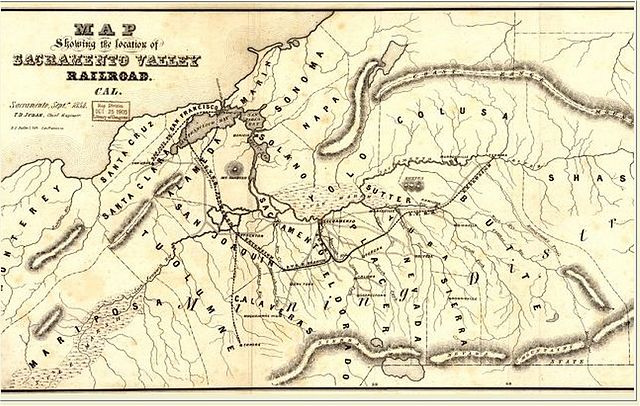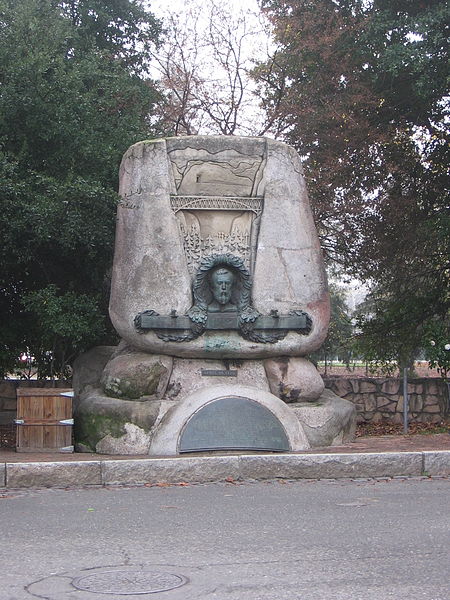Theodore Dehone Judah was an American civil engineer who was a central figure in the original promotion, establishment, and design of the First transcontinental railroad. He found investors for what became the Central Pacific Railroad (CPRR). As chief engineer, he performed much of the route survey work to determine the best alignment for the railroad over the Sierra Nevada, which was completed six years after his death.
T.D. Judah, c. 1862, age 36
Sketch of the Sacramento Valley RR as provided by its engineer, Theodore Judah.
Theodore Judah monument (1930), northeast corner of 2nd and L Street in Old Sacramento, CA
First transcontinental railroad
America's first transcontinental railroad was a 1,911-mile (3,075 km) continuous railroad line built between 1863 and 1869 that connected the existing eastern U.S. rail network at Council Bluffs, Iowa, with the Pacific coast at the Oakland Long Wharf on San Francisco Bay. The rail line was built by three private companies over public lands provided by extensive U.S. land grants. Building was financed by both state and U.S. government subsidy bonds as well as by company-issued mortgage bonds. The Western Pacific Railroad Company built 132 miles (212 km) of track from the road's western terminus at Alameda/Oakland to Sacramento, California. The Central Pacific Railroad Company of California (CPRR) constructed 690 miles (1,110 km) east from Sacramento to Promontory Summit, Utah Territory. The Union Pacific Railroad (UPRR) built 1,085 miles (1,746 km) from the road's eastern terminus at the Missouri River settlements of Council Bluffs and Omaha, Nebraska, westward to Promontory Summit.

The ceremony for the driving of the "Last Spike" at Promontory Summit, Utah, May 10, 1869
Title page of Dr. Hartwell Carver's 1847 Pacific Railroad proposal to Congress from Lake Michigan to the West Coast
The official poster announcing the Pacific Railroad's grand opening
Leland Stanford and the officers of the CPRR in 1870







